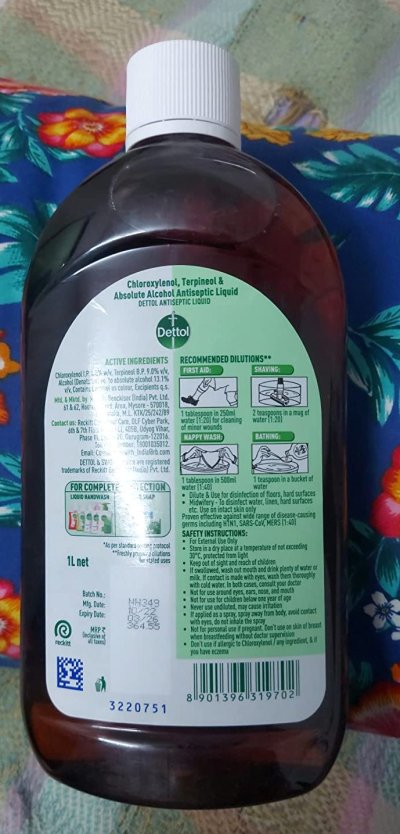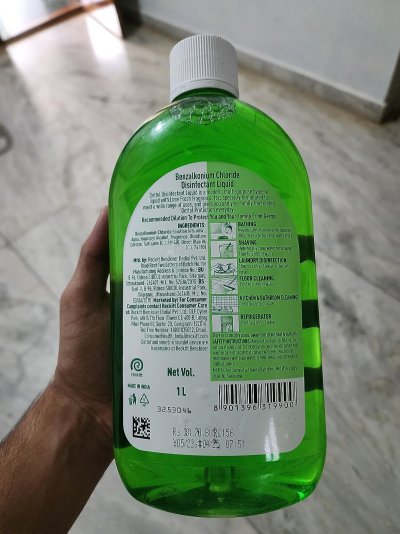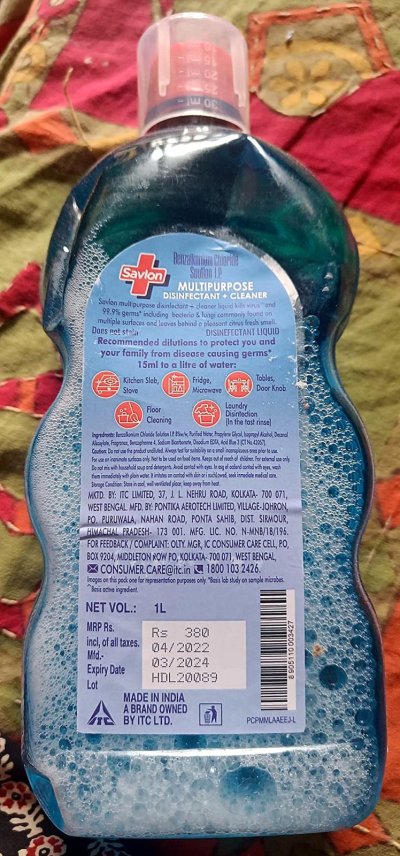Ssreek
Herald
May I ask for a few pictures?
This is weird.What kind of photos ?
May I ask for a few pictures?
This is weird.What kind of photos ?
Washing machines are beautiful too you know!!!This is weird.
Are i was aking photos of exactly which parts of washing machine ?? Or just random clicks which were taken for reference.This is weird.
Did you use Vanish at all? that should have handled any sludge. Citric acid would have taken care of the scaling. I asked for feedback but you never replied back.Hey guys so i just decided to dismantle my IFB front loader last weekend the reason was it getting stuck on drain during dry spin cycle despite using the regular cleaning procedures provided by IFB there was so much lint/dirt/hard water deposits that the water pump which is responsible for throwing dirty water out and also recycling the water during wash cycle has clogged .
Wish you mentioned you planned to do a dismantle so we could have given you some pointers on what to document.What kind of photos ? As mostly i didnt document the process just have few photos for reference for assembly.
No i didn't used the vanish and citric acid , my laziness and availability of IFB descal in home to blame here (I know you said that the stuff doesn't work but i thought it will be be better that nothing).Did you use Vanish at all? that should have handled any sludge. Citric acid would have taken care of the scaling. I asked for feedback but you never replied back.
The machine was getting stuck every time at drain cycle due to clog in the waste water route, so i skipped the chemical clean and went with a manual disassembly just to pressure wash each and everythingGranted a manual cleaning is the best but the purpose here is not to have to dismantle the machine if at all possible.
It sounds like the machine got stuck and no cleaning cycle would have helped so you went with disassembly.
Actually parents told me to call the tech but the DIYer in me woke up and i just started to dismantle the machine without properly documenting anythingWish you mentioned you planned to do a dismantle so we could have given you some pointers on what to document.
It had corrosion all over not as bad which is shown Here But it will not hold for another 5 years . The drum had deposits at outer surface (Looked like hardwater deposits).What state was the drum spider in? this is the most important part but you didn't mention it.
By the assessment i think i will do the cleaning cycle every month instead of the 3 month which i use to do . (Using Vanish and citric acid from now on.)So what changes will you make in how you use the machine based on what you saw?
What detergent did you use? what temperature washes. What wash cycle do you usually use. How often you maintained the machine if at all and what you used.
Was it really scaling you saw or just cheap detergent residue. Do you have hard water?
WASH : Fill full tub water : WATER IN
WASH : wait till 95 min : WAIT 15 min
WASH : Spin for a few secs at 95 min : SPIN
WASH : wait till 90 min : WAIT 5 min
WASH : Spin for a few secs at 90 min : SPIN
WASH : wait till 85 min : WAIT 5 min
WASH : Drops full tub water at 80 min mark : WATER OUT
WASH : Spin for a few secs at 80 min : SPIN
RINSE : Half tub water start 77 min to 71min : WATER IN (half? maybe a bit more)
RINSE : Tumble from 71min till 51min : TUMBLE 20 min
RINSE : Drops water at 50 min mark : WATER OUT
RINSE : Spin empty from 50 min till 40 min : SPIN 10 min
RINSE : Fill water till 33 min rem : WATER IN (75%? maybe full)
RINSE : Tumble from 33 min till 13 min rem : TUMBLE 20 min
SPIN : Drops water at 13min rem : WATER OUT
SPIN : Spin till 0 min : SPIN 10 min
You need a biocide. There are two options Vanish or LizolNow should I run a cycle with descaler/ citric acid or Vanish? Need to get hold of some fresh whites/ mops to run if required. Should I choose tub clean for cirtric acid and vanish or regular wash cycle?
2kg Citric AcidCitric acid - Any links for prime fulfilled options?
Also Vanish powder has 2 options - Pink and White - Which one to get?
If you can post a full video that would be good. Just to see whether there is any change from earlier models. I don't expect it though.I did a tub clean (without any additives) on my LG 7kg FL yesterday for the first time after buying it almost 6 months back. The cycle timer was 1 hour 15 mins. The panel did not show the water temp and RPM. I have taken some videos of it running. Will post later.
 Though less likely with LG's as their boards are covered in epoxy. No component level fixes possible but then chances of failure from things like this is less.
Though less likely with LG's as their boards are covered in epoxy. No component level fixes possible but then chances of failure from things like this is less.No, they are different. The link you posted (Amazon) is for food, while the other one is for industrial citric acid powder.This is same too. Right?
For the purposes of descaling, I don't think there is a difference. One is food grade while the other is not.No, they are different. The link you posted (Amazon) is for food, while the other one is for industrial citric acid powder.
Do you mean floor cleaner lizol?You need a biocide. There are two options Vanish or Lizol
50gm of Vanish with some mops should work in a tub clean cycle OR a scoop full (60ml) of Lizol directly in the drum with a mop or two in a Cottons 65 with Intensive option selected.
Citric acid will have to be run separately and you will need 100gm or two scoops (the kind we used to get with detergent) in a tub clean
With Lizol you can mix the two as they do not react with each other. So the citric acid goes in the drawer and the Lizol in the drum.
How hard is your water?
2kg Citric Acid
I'd run a boil wash that is cottons 95 with nothing at least once a month.
If you can post a full video that would be good. Just to see whether there is any change from earlier models. I don't expect it though.
Specifically, yes and in the amount specified.Do you mean floor cleaner lizol?
To clean:
Use full-strength or dilute 1/4 cup (2 oz.) per gallon of warm water
Apply to surface until thoroughly wet
Wipe with a clean cloth, sponge, mop, or trigger spray.
To clean soap scum and greasy soil:
Use full strength and rinse
To sanitize / disinfect:
Pre-clean surface
Use full-strength or dilute 1 oz. with 5 oz. of warm water
Apply to surface until thoroughly wet
To Sanitize: Leave for 1 minute before wiping
To disinfect:
Leave for 6 minutes before wiping
Rinse all food contact surfaces with water after using the product

Cool there are laundry sanitizers available in the market, I guess with the same composition.Specifically, yes and in the amount specified.
My concern is the amount specified by India Lizol to clean the floor isn't enough for a machine so I've quadrupled the dose to match the recommended dose abroad.
in India they mention a capful or 15ml per 4 litres water to clean the floor. In the UK or US, the amount is 60ml or two caps. See here for the American Lysol
Says to use 2 oz (60ml) per US gallon which is just under 4 litres.
Or consider the British equivalent which is called Flash and it says two caps which is 2 x 30ml per five litres of water.
There seems to be some standard abroad with dosage for these products.
But the Indian instructions say capful or 15ml per four litres.
I don't believe the Indian version is 4x more concentrated than the American variant
My concern with using this product for the intended purpose isn't health related or whether it will harm the machine.
My concern is it not working because it was underdosed and I did not receive the benefit of using it.
So I'd rather hit the machine with a proper dose and have the peace of mind it is doing EXACTLY what I intend it to do.
With a regular wash of five litres of water use a scoop full. But if you use LG's tub clean which uses 15 litres of water then you need to use three scoops or 150ml
I ran 60ml with a Cottons 65 wash and there was a nice lemony scent coming from the machine which I did not sense when I used just a capful of 15ml
Yes, for removing smells from laundry. But here I'm using Lizol to clean the machine. Non-targeted products work out cheaper.Cool there are laundry sanitizers available in the market, I guess with the same composition.

The reason is there is as yet no known way to include oxygen bleach in a stable state in liquid detergents. Only powders. This is why Vanish powder contains oxygen bleach and liquid Vanish does not. Liquid Vanish uses optical brighteners instead and will not clean a machine or kill any bacteria.Low temperature washing using liquid detergents can cause front loading washing machines to become heavily contaminated with bacteria. This results in less hygienic machines, less hygienic clothing, unpleasant odors and reduced fabric whiteness.
Since no powder detergent in India includes oxygen bleach, just add some Vanish to the powder. Say 10gm Vanish for every 30gm of detergent powder per wash. The idea here is if you do it every wash the machine will remain clean and not need the second option. But will work out more expensive over time.Incorporating TAED into the washing process either in the form of
a) a bleach booster
See the first post in the thread, where Vanish is suggested as a machine cleanerb) machine cleaner or
This option is unavailable in India as it refers to detergents containing oxygen bleach with TAED.c) mainwash detergent
maintains a hygienic wash by reducing bacterial contamination. It freshens the wash load and improves fabric whiteness






